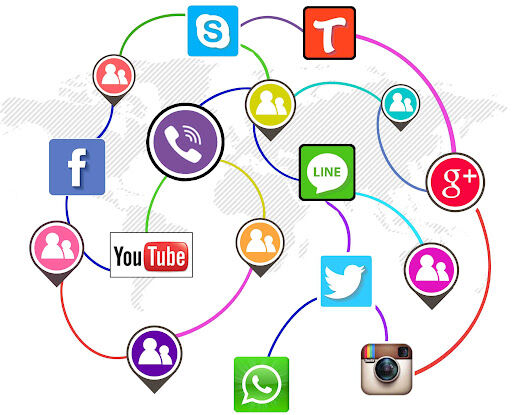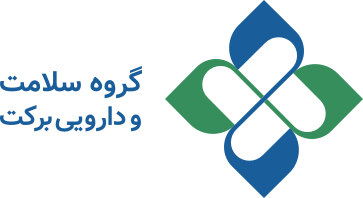
Mastering Time in Digital Age: Transforming Digital Pressure into True Peace
Barekat Health & Pharmaceutical Group: In today’s hyper-connected world, time management has become one of our most pressing challenges. With a constant stream of notifications, messages, and endless digital distractions, it’s easy to feel overwhelmed. While the digital world offers unparalleled opportunities for connectivity and access to information, it can also erode our mental and emotional well-being when left unchecked.
The key to escaping the digital pressure and finding real peace lies in mastering how we engage with the online world. By setting thoughtful boundaries, curating our digital experiences, and prioritizing meaningful interactions, we can regain control over our time and preserve our well-being.
Setting Digital Boundaries to Protect Mental Health
Setting digital boundaries means defining specific times and places where digital devices are not used. These boundaries may include designated times to check messages, limiting device usage at night, and creating technology-free spaces in the home. For example, specific hours of the day could be designated as phone-free times to enhance focus on other activities.
In addition, using features like the “Do Not Disturb” mode on smartphones and disabling notifications can help reduce distractions and increase focus. These measures help individuals focus on important tasks and activities without digital interruptions.
Using Time Management Tools & Automating Tasks
To reduce time spent on social networks, social media management tools like Buffer, Hootsuite, and Later can be used.
-
Buffer is a social media management tool that allows users to schedule and publish posts on various social networks (such as Facebook, Twitter, Instagram, and LinkedIn). It also helps analyze post performance and provides useful insights into interactions and feedback.
-
Hootsuite is another social media management tool that enables users to manage multiple accounts from a single platform. Hootsuite allows users to schedule posts, manage message responses, and gain insights into content performance.
-
Later is a content management tool designed specifically for image-based social networks like Instagram. Users can schedule their posts, upload images, and automatically publish them at specified times. This tool is especially useful for businesses that focus on visual marketing.
These tools allow users to schedule posts, monitor interactions, and analyze performance, thus reducing the need for constant presence on social networks.
Additionally, apps such as Screen Time on iOS or Digital Wellbeing on Android can help users track their app usage and set time limits for them. These features enable individuals to make better decisions regarding their digital activities by raising awareness of their usage patterns.
Creating a Specific Schedule for Social Media Usage
Careful planning for social media use can help manage time more effectively. For example, certain times can be allocated for checking messages and posts, preventing aimless and prolonged use. This approach can increase productivity and reduce the stress caused by excessive use of social networks.
Moreover, setting specific times for social media use as a reward after completing important tasks can boost motivation. This method helps individuals use social networks as a tool to motivate themselves, rather than as a source of distraction.
Focusing on the Quality of Interactions Rather Than Quantity
Instead of continuously scrolling through posts and updates, aim for meaningful and high-quality interactions with friends and followers. This approach can lead to a greater sense of satisfaction and deeper connection, preventing the loneliness and anxiety often caused by superficial use of social networks.
Additionally, following accounts that offer positive, educational, or motivational content can enhance the user experience and protect against the negative effects of harmful or comparative content. These choices help individuals make the most out of social networks.
Conducting Regular Digital Cleanups
Periodically reviewing and cleaning up social media accounts can help reduce pressure and stress. By unfollowing or muting accounts that lead to negative comparisons or unpleasant feelings, individuals can create a healthier and more positive online environment.
Furthermore, apps like Quality Time can help users track the time spent on each app and make better decisions about their digital device usage. These tools allow individuals to manage their digital behaviors with an awareness of their usage patterns.
Using Digital Stress Reduction Techniques
Techniques such as the “20-20-20 rule” (every 20 minutes, look at something 20 feet away for 20 seconds) can help reduce eye strain and stress caused by prolonged device use. Additionally, using website-blocking apps and setting device-free times can enhance focus and reduce digital pressure.
Moreover, activating “Do Not Disturb” or “Focus” modes on smartphones can help reduce distracting notifications and allow individuals to focus on important tasks without digital interruptions. These features help people manage their time more effectively.
Allocating Time for Offline Activities & Real-Life Interactions
To cope with the pressure of social media, it is important to dedicate time to offline activities such as reading, exercising, and socializing with friends and family. These activities can improve mental health, enhance sleep quality, and reduce stress. Furthermore, allocating time for offline activities allows individuals to enjoy real human connections, fostering a sense of security and emotional support while preventing isolation and loneliness that can arise in the virtual world.
Real-life interactions with family, friends, and colleagues, as well as engaging in social activities, can help reduce the psychological pressure caused by social networks and digital life. Activities like walking, yoga, reading, or even cooking can provide an opportunity to disconnect from the online world and recharge. This balance between online and offline life contributes to maintaining both mental and physical health.
Setting Time Limits & Using Focus Techniques
To prevent prolonged and aimless social media use, various techniques can be employed to limit screen time. One effective method is using digital timers and time management apps. For example, apps like Forest can help individuals focus during specific periods, preventing the temptation of endless scrolling on social media.
Additionally, users can set time limits for social media use. For instance, they could allocate just 15 minutes of the day to browse through social media news and then engage in other activities like reading or exercising. This helps individuals focus more on important tasks and prevent overuse of these platforms.
Enhancing Awareness & Self-Care
One of the most important steps in managing social media time effectively is enhancing awareness and self-care. A clear understanding of how much time is spent on these platforms, and recognizing the negative impacts they can have on mental and physical health, will help individuals make necessary changes. Learning how to manage negative emotions stemming from excessive social media use—such as anxiety or depression—can give individuals a greater sense of control and security when facing the pressures of the online world.
This awareness also helps individuals use social networks as a tool for constructive and beneficial communication, making use of them for personal or professional purposes rather than allowing them to become sources of pressure and anxiety.
Setting Goals & Priorities for Social Media Use
A key method for effectively managing time on social media is setting clear goals and priorities. Ask yourself why you are using social networks and what you hope to achieve. Are you using them to stay connected with friends and family? Or for information and entertainment? Having a clear goal helps you make the best use of your time and avoid falling into endless cycles of useless information.
Also, having clear priorities allows you to focus only on relevant and useful information, helping you avoid getting stuck in the deep, aimless holes of social media.
Conclusion
Time management on social networks is one of the main challenges of the digital age. While these platforms can offer opportunities for personal growth and connection, they can also lead to stress and mental pressure.
By implementing effective strategies like setting digital boundaries, using time management tools, focusing on quality interactions, and dedicating time to offline activities, we can use social networks more effectively and avoid their negative consequences. Ultimately, awareness and self-care are key pillars in managing time in the online world, helping to preserve mental health, increase productivity, and improve overall quality of life.
-
Barkat Group specialized meeting

-
Safa Appointed as Barekat General Director

-
Barekat Health & Pharmaceutical Group at the 10th Iran Pharma Exhibition

-
Ali Safa visits Sobhan Oncology & Sobhan Darou

-
Pirsalehi & Safa visit Saman Daroo 8 Knowledge-based Company

-
Barekat Managing Director Visits Samen Pharmaceutical Company

-
Honoring Pharmacists’ Day

-
Barekat Top Executives Visiting to Barekat Hospital

